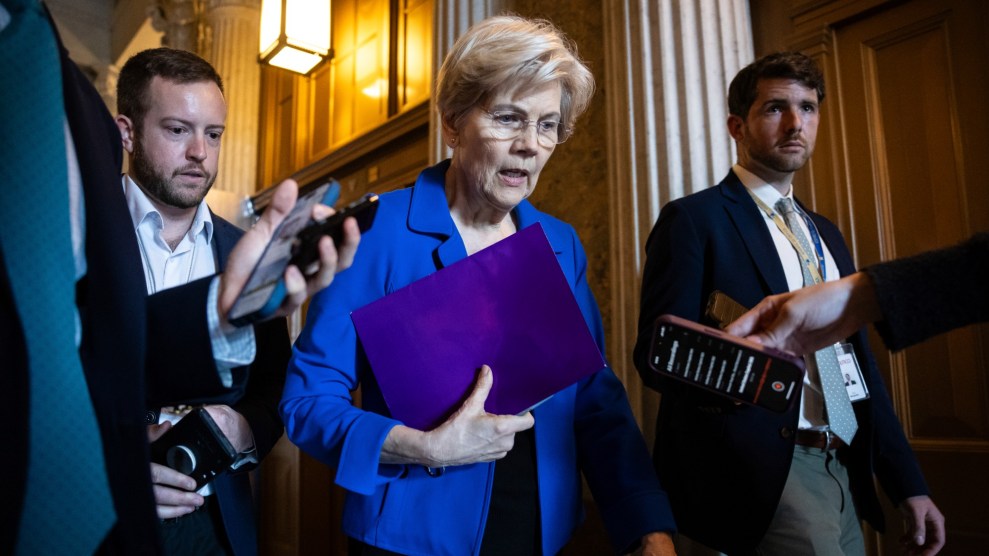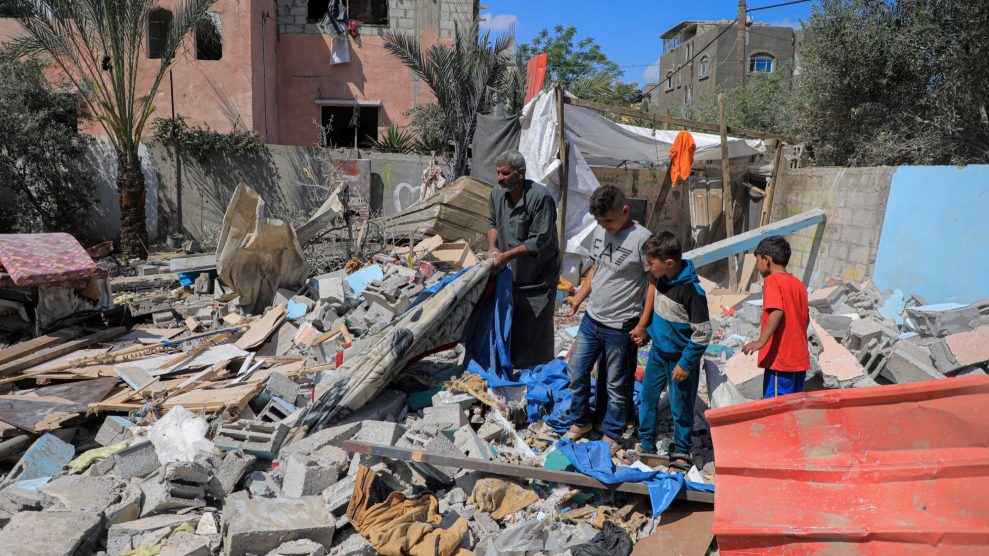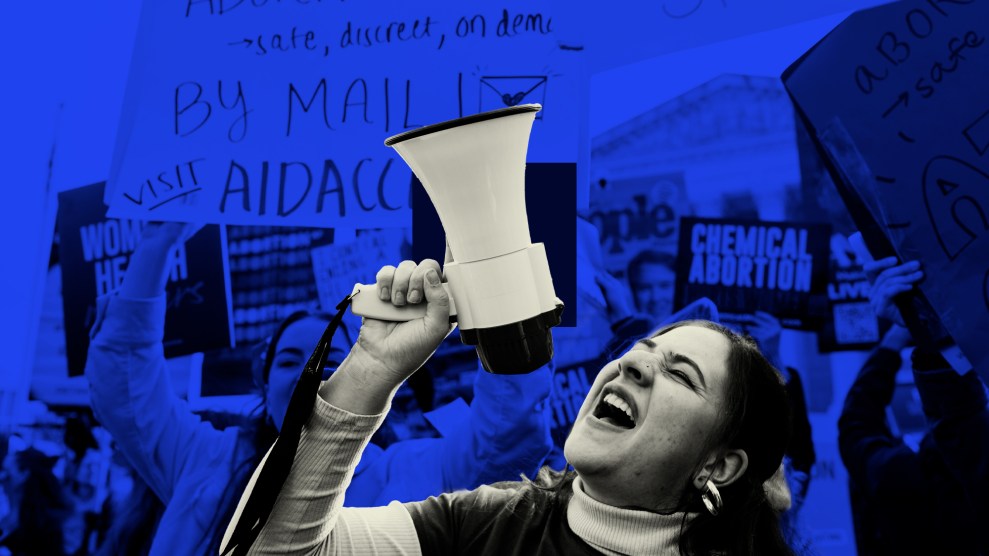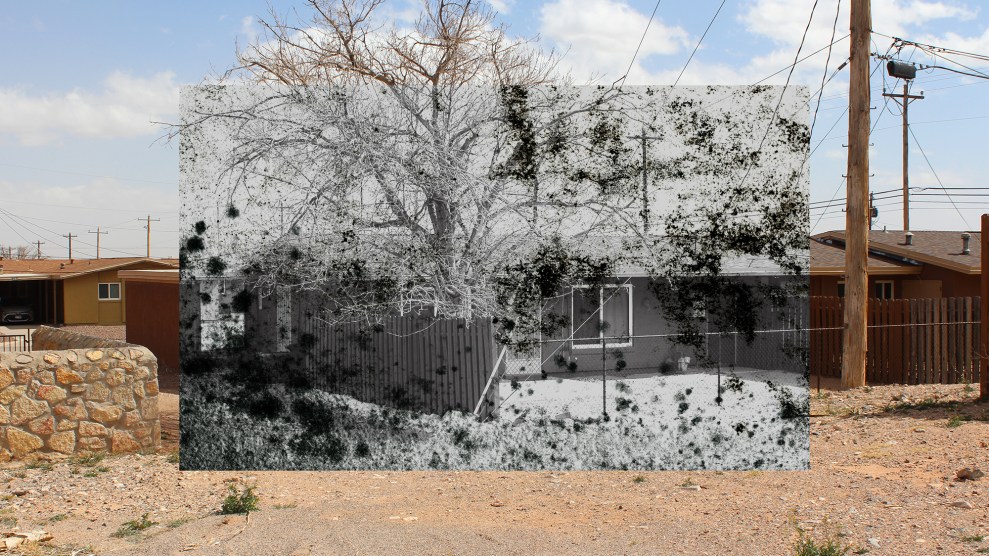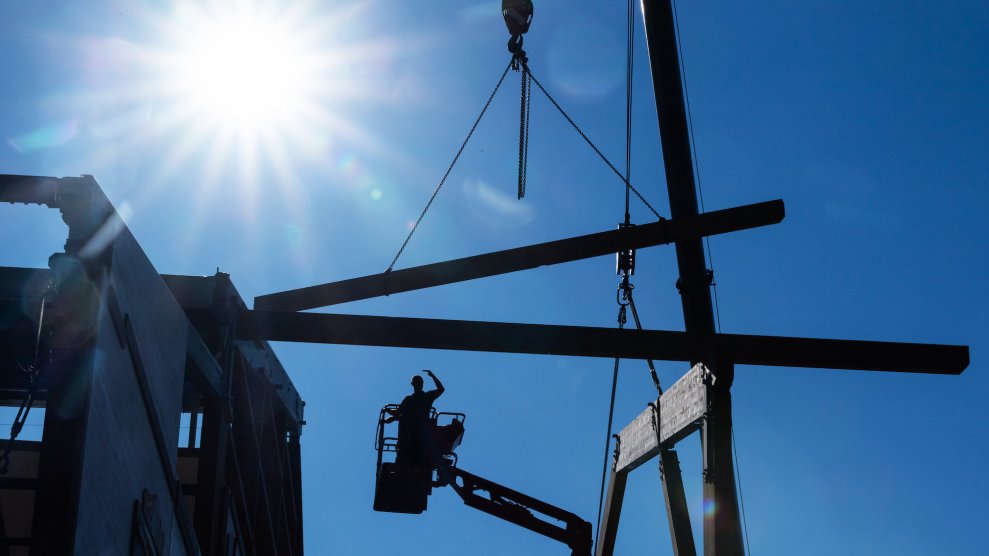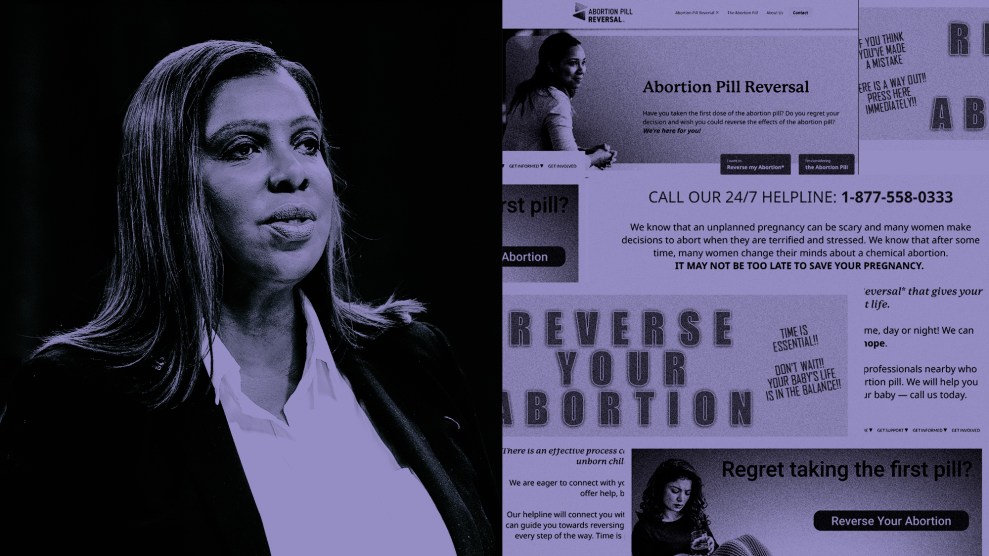
Mother Jones; Getty
Last week, the Supreme Court heard oral arguments in what could end up being its most consequential abortion decision since Dobbs. In a case pitting Idaho’s extreme abortion ban against a federal law known as EMTALA—that since 1986 has required hospitals to provide emergency care—conservative justices seemed to embrace the idea that states can deny crisis medical treatment to pregnant patients, even if doing so means those patients suffer catastrophic, life-altering injuries. “My reaction can be summed up as ‘appalled,’” says Sara Rosenbaum, emerita professor at George Washington University who is one of the country’s foremost experts in health policy issues affecting women and families. “Will [the court] really say it is fine [to enforce] a law that costs women their organs as long as they don’t die?”
It’s hard to think of a piece of progressive American health care policy since the late 1970s in which Rosenbaum hasn’t played a pivotal role conceptualizing, enacting, or improving. That includes the federal statute that guarantees the right of every American to go to a hospital emergency room and receive medical treatment before being sent somewhere else. The Emergency Medical Treatment and Labor Act requires hospitals to screen and stabilize anyone who arrives at the emergency room, including women in active labor. Narrow in scope yet vast in impact, the law has been a “force field around hospital emergency departments,” Rosenbaum says, protecting pregnant patients for four decades. Now, with the Dobbs decision, SCOTUS has “blown up medical care for childbearing people,” she says—and EMTALA could be the next major health care protection that the court decides to explode.
To more fully understand the implications of the case before the Supreme Court, we reached out to Rosenbaum to discuss the history of this unique statute and why it has become even more vital since the end of Roe v Wade.
You’ve called EMTALA “revolutionary” and “the most important American health care law that we have.” Why? What makes this law so special?
It’s the only American law we have that guarantees access to care. For everybody. It doesn’t matter who you are—whether you have insurance or don’t have insurance, what color you are, how much money you have, whether or not you’re disabled. If you come to a hospital emergency department and you believe you have an emergency, they have to screen you. If it is an emergency, they have to stabilize you. The definition of an emergency isn’t that you’re in danger of dying; it includes situations that could lead to severe, long-lasting physical harm. And the decision about what is required to stabilize you—it’s up to the doctor’s medical judgment.
I would say EMTALA is really our only universal health care law.
This law is from 1986. What was happening in the ’70s and ’80s that made EMTALA seem so necessary?
A few things were going on. Back in the early ’80s, a decision was made that the United States was spending too much on hospital care. So Congress changed the payment structure for Medicare [the single largest payer for health care services in the US] to incentivize shorter stays. Pretty soon there were stories emanating from the press about a phenomenon they called “sicker and quicker,” where patients who actually had been admitted to the hospital were getting discharged too soon, when they were still unstable.
Another major problem was that indigent people were not able to get emergency care at all. There were a lot of stories of women being sent away in labor—not just pregnant patients, although that was the story that got the most play. In those days, many fewer women were eligible for Medicaid than are today and it wasn’t as generous. Only very, very indigent women could get Medicaid coverage.
Later in the 1980s, you also helped persuade Congress to vastly expand Medicaid for pregnant women, making it a federal requirement.
There’s no question that poor people bore the brunt, but they were not the only ones. For example, one of the most famous EMTALA cases from that period involved a patient with HIV—nobody would touch him. There have been many cases of fully insured people who, for whatever reason, hospitals just chose not to treat. People who were in a drunk driving accident and were out of control, for example, or mental health patients who were disruptive. Even if the patient was well insured, if they were a handful they would get sent over to the public hospital.
Hospitals are very good at getting rid of people they don’t want. And so, while indigent people were the immediate focus, there’s nothing in EMTALA that limits it to uninsured people. That’s the important thing.
Tell me about one of your pregnancy cases from this era.
One of the cases I worked on in the mid-’70s involved a Black woman named Hattie Mae Campbell who went into premature labor at her home near Holly Springs, Mississippi. She had Medicaid, but the local hospital refused to treat Medicaid patients. The baby was coming out. And the nurse stood at the door of the hospital with her arms spread wide, blocking the entrance, refusing to let her set one foot inside, because once a patient crossed over the line, there were legal arguments to be made that the hospital had begun the admission process. So she gave birth in the parking lot.
And we know that after the birth, the staff still refused admission. They provided a sheet to wrap the baby, then they transferred Campbell and her newborn to another hospital 30 miles away. How much of a factor was racism in these situations?
Race is always a factor—a combination of racism and the fact that people of color were even more poorly insured than white people.
Were there regional differences in how patients were being treated?
There were hospitals all along the Texas-Mexico border that would dress up [security] guards as immigration officials. They would station personnel at the door so you couldn’t come in. But this was going on everywhere. Rich states, poor states, affluent communities, not-so-affluent communities, racist communities, not-such-racist communities. It was happening everywhere because [private] hospitals felt that public hospitals or community hospitals should take care of patients they didn’t want.
You should understand that hospitals were set up to accept only the patients they want. That has been tempered a bit. In the case of emergency care, they can’t do that anymore. But it hasn’t changed that much. A hospital might want me for elective surgery but not my neighbor down the street who’s a Latina who has Medicaid coverage. I mean, they have all kinds of ways to avoid patients they don’t want, right? The type of insurance they take, the doctors they give admitting privileges to, deciding what networks to be part of.
That’s why EMTALA was enacted using Medicare, which is a national program, as the stick. If you as a hospital want to participate in Medicare, and you run an emergency department, then you must do these things as a condition of participation.
Even despite all these horror stories, I still have a hard time imagining how you and other public health advocates managed to get EMTALA passed.
There was no resistance in Congress. None. A Republican Senate, a Democratic House, virtually identical language in both bills. Signed by Ronald Reagan. It really was a different era in the life of the United States.
And then what happened?
Oh, then there was huge hospital resistance. Even though hospitals were very involved in designing EMTALA, it’s a pretty heavy-duty regulation. Over the years, there’s been a lot of resistance both to the requirement that hospitals have to do an initial screening and to the requirement that they have to stabilize the patient before discharging or transferring. There have been thousands of EMTALA cases. The federal government has brought them, private individuals have brought them.
There was a lot of resistance from attending doctors as well. The very first enforcement action was a birth case out of Texas. An OB-GYN who was supposed to be on-call went duck hunting, and when the hospital got a call that a woman had presented in labor, he said, basically, “I’m not coming in for her.”
In 1989, the language of the statute was tweaked to clarify that EMTALA didn’t just apply to the pregnant person, but also to the “unborn child.” Nowadays that goes right to the “personhood” argument of abortion opponents—indeed Justice Alito invoked it during oral arguments. Why was that language necessary then and how is it different from how it is being deployed today?
Because women were still giving birth in parking lots. Women in labor were still being spurned. That language is in there because women who literally had babies coming out of them were being sent away. Everybody understood that you had two medical crises going on here, the crisis of the mother and the crisis of the baby. Everyone, apparently, except the noncompliant hospitals. The concern was not just the pregnant woman, the way it is with some of the emergencies we’re hearing about post-Dobbs, where the fetus is utterly non-viable and the focus is rightly on the pregnant woman.
So the language was clarified: The baby was also a patient. Here on Planet Earth, there are two concerns in labor and delivery, the mother and the baby.
Was there any worry that at some point in the future, anti-abortion people might point to that language and say, as Idaho and Texas are arguing now, “See, EMTALA actually means we can’t do abortions because we have to care for the unborn child”?
That really was not ever the intent. No, no, no, no. We didn’t put that language in there because we were suddenly creating embryonic fetal rights. It’s just a complete misunderstanding of EMTALA.
The pro-choice world crabbed about the language but didn’t fight it tooth and nail because everyone understood the context was labor and delivery. And they were going to lose that [battle]—no member of Congress was willing to listen to nonsense at that point about “clean up your language.” I’ve litigated abortion cases since the Hyde Amendment [the 1976 law banning the use of federal funds for abortion under most circumstances], and I was completely not troubled by that language.
Was it always understood that in some situations, EMTALA might require doctors to do emergency abortions?
This issue of abortion as an emergency procedure has been grounded in EMTALA for a long, long time. There were already cases in the early ’90s of women coming to the hospital with a terrible pregnancy emergency where an abortion had to happen. Or they’d had an abortion that failed, or an incomplete miscarriage that needed an abortion procedure. So this issue [of whether EMTALA requires hospitals to perform emergency abortions] is not new. What’s new is Dobbs. What’s new is what the Supreme Court unleashed when it overturned Roe v Wade.
Pregnancy-related complications that might lead to emergency abortions—for example, when the embryo implants in the fallopian tube instead of the uterus, or when a woman’s water breaks too early for the fetus to survive—are a lot more common than many people realize. But pregnant people end up in the emergency room for all kinds of other reasons, too.
Pregnant people are frequent users of emergency departments. About one in 500 pregnancies goes to an emergency department at some point. Most of the attention has rightly been placed on emergencies where something terrible has happened to the pregnancy itself. But there’s a whole other group of emergencies that aren’t pregnancy-related—it could be appendicitis, it could be a car accident, it could be domestic abuse, it could be COVID.
The tendency when somebody is pregnant is to send them to the emergency department right away because you don’t want to take any chances. And sometimes in these situations, you need anesthesia, you need surgery. Sometimes, unfortunately, as a consequence of treatment you may have a demise. What Idaho has done is to make every pregnant person coming to an emergency department radioactive.
As someone who has spent your whole career steeped in health policy and health law, did you see this moment coming? When hospitals turn away pregnant patients with life-threatening emergencies? When a law as important as EMTALA seems on the verge of being gutted?
It was very evident, from the moment that the Dobbs decision was leaked, that there was just a total, fundamental clash between what states like Idaho with these terrible abortion bans thought they had the license to do and what EMTALA required.
When the Dobbs decision finally came down, my daughter called, incredibly upset. All of her friends were incredibly upset. I said, “Here’s my one piece of advice. You have friends all over the country. The ones who live in any one of the states that are going to impose a complete ban, tell them that they must not get pregnant. And if they do want to be pregnant, they must move away. Because a lot of things can go wrong in a pregnancy, and if anything goes wrong, they’re not going to be able to get emergency care.”
The other thing that I realized right away is that it would be impossible for doctors to practice in these places, and there would be a huge exodus of providers. And in Idaho that has happened. So people like me, who are steeped in health policy, understood immediately what was coming. But where we are now is worse than I could have even imagined it was going to be.
This conversation has been edited for clarity and length.



